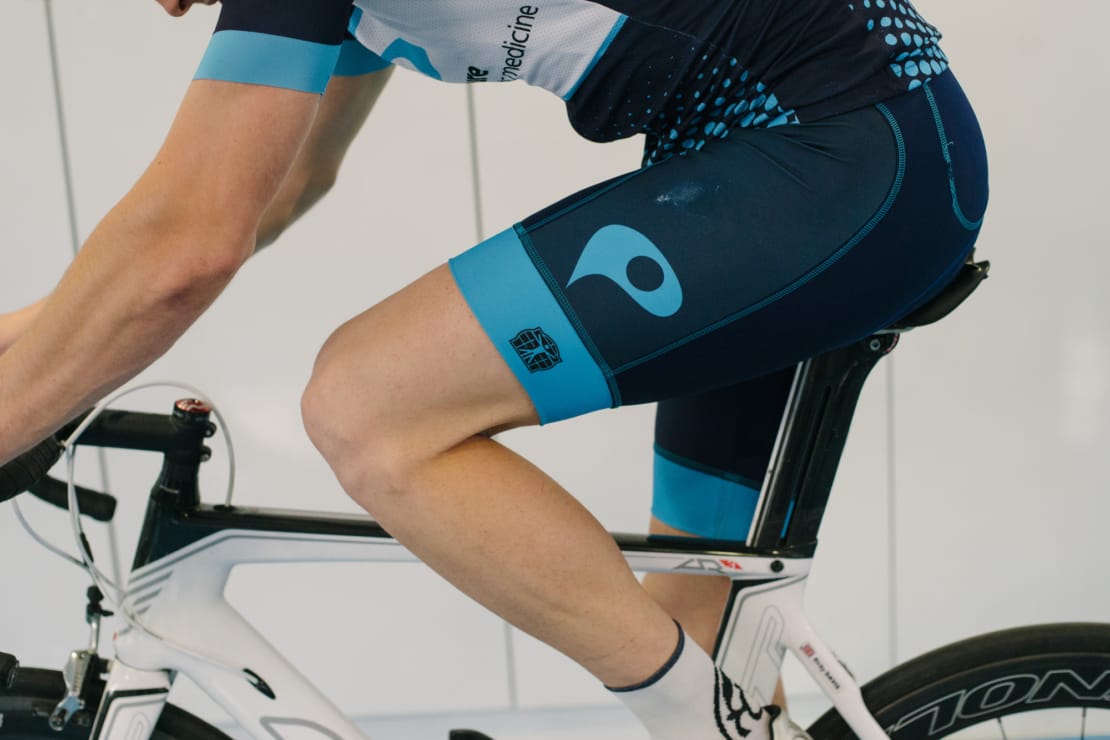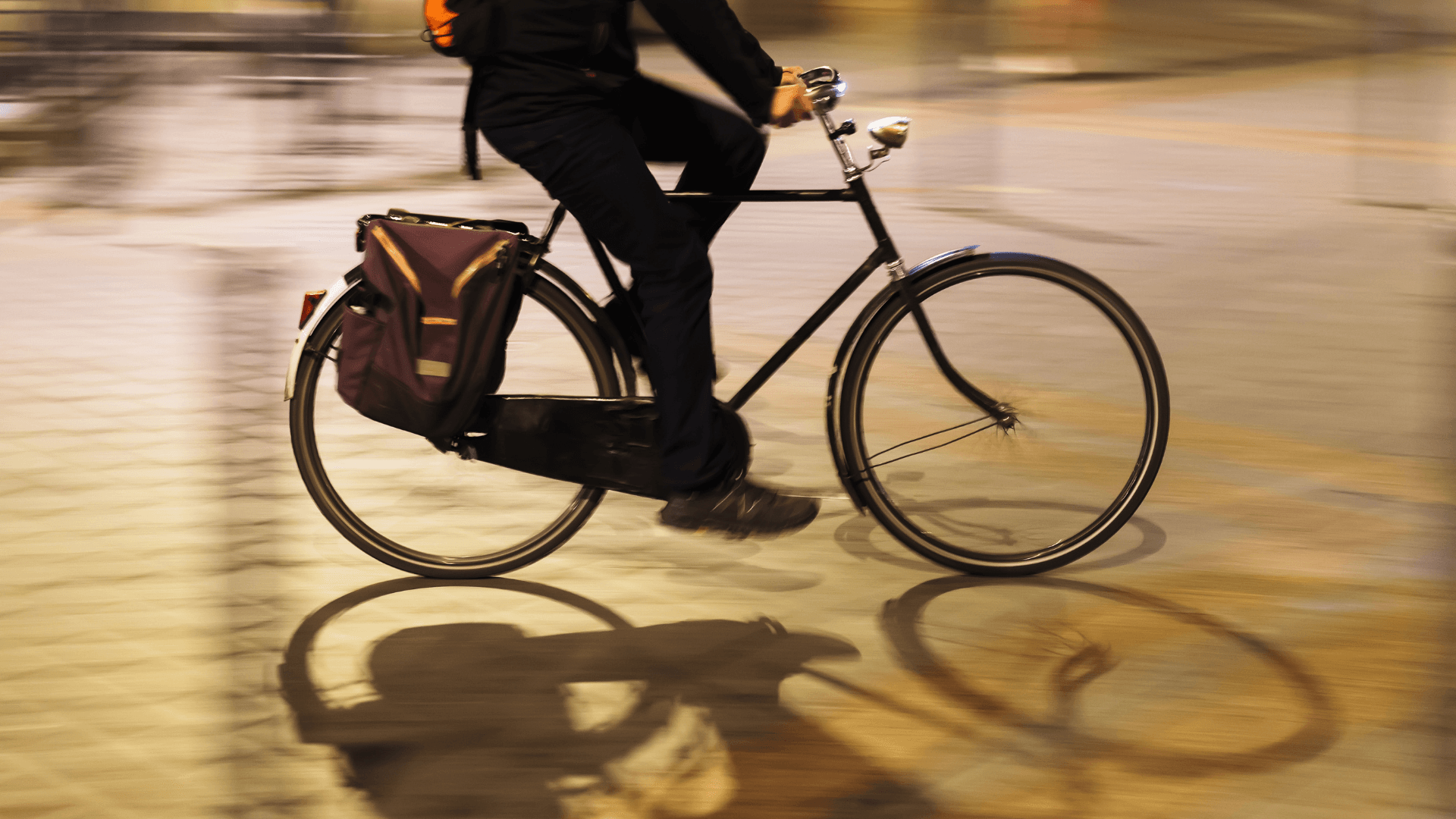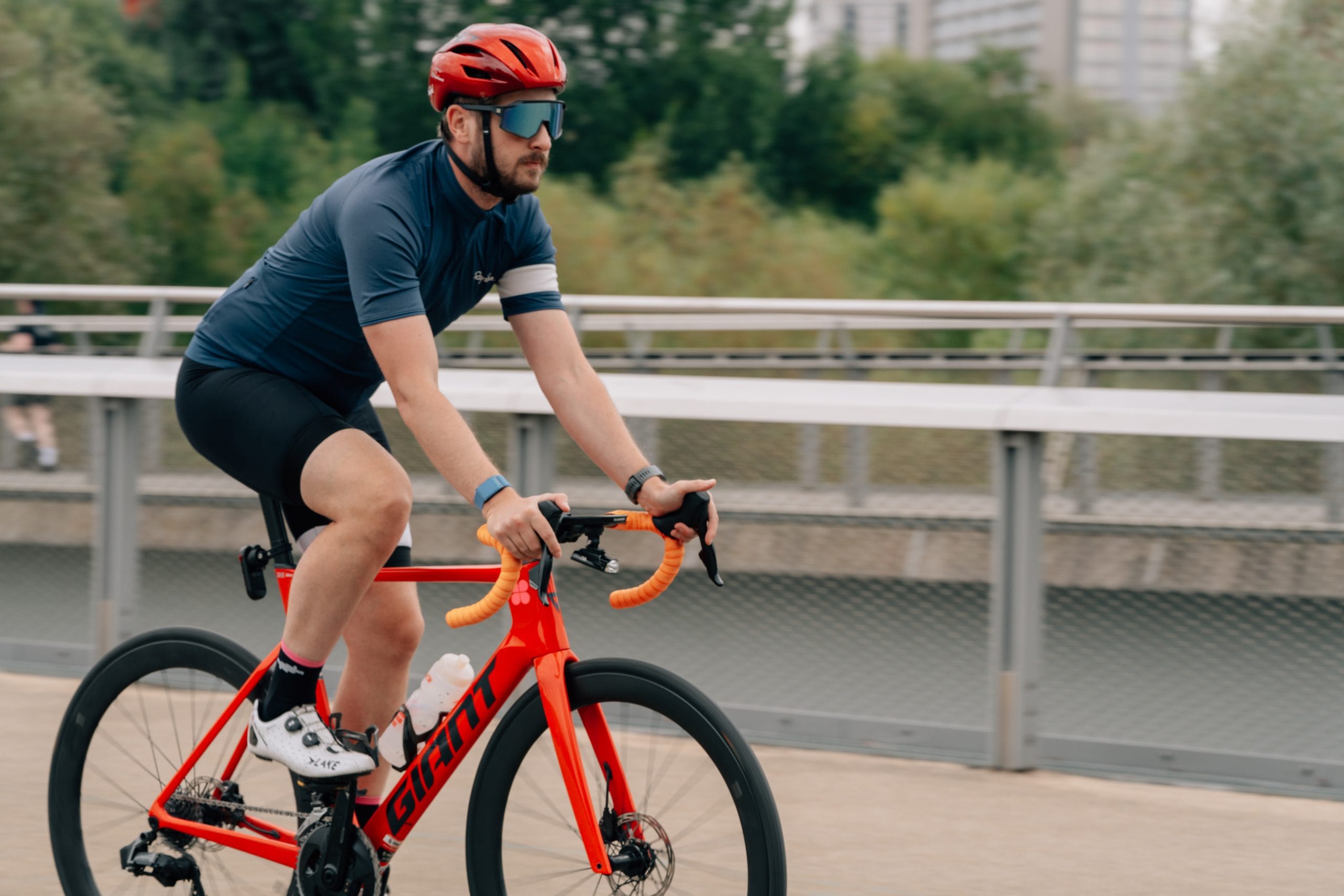Indoor Cycling: Benefits, Injury Risks, and Expert Tips

Pure Sports Medicine
- 26 January, 2023
- Cycling
- 5 min read
Indoor cycle classes are continuing to grow in popularity and it’s no surprise why. With great music and a sociable group environment, the excitable energy of these classes is unparalleled.

The main reason people favour in-person classes is, of course, the incredibly motivational and vibrant instructors that run them. With increased demand for these classes, especially during the winter months, it could mean you are leading daily classes or even multiple classes per day.
By design, these classes are high intensity and completing many of these a week can be very demanding on the body. As a result, it is important to ensure you are taking steps to look after yourself and reduce the risk of injuries popping up.
The affects of too much indoor cycling
While a great option for exercise due to its cardiovascular benefits and low-impact qualities, the repetitive nature of cycling can put you at risk of overuse or ‘gradual onset’ injuries. This is especially the case when it is performed at high volumes or high intensity. In indoor cycling it is more commonly the soft tissues that may be affected such as your tendons or muscles.
The most frequent site of injury in cyclists is pain at the anterior knee (front and centre), most commonly a condition known as patellofemoral pain. Symptoms of this will typically worsen throughout the duration of a cycling session but may sometimes re-appear again later after completing the session.
It is often aggravated by repetitive knee extension against resistance i.e., the downward phase of the pedal stroke. Put into context, a cadence of between 80-100 RPM in a 30-minute spin class equates to 2400-3000 pedal strokes in a session. Add in more resistance too and you can increase the load through your knee quite drastically.
Other common areas of injury in cycling can include lower or upper back pain. This can be because these areas are often required to hold relatively static positions for a long period of time, which can lead to a feeling of stiffness or even overload these structures.
This is especially amplified in a class setting where there is less opportunity to stop and fidget like you perhaps would on an outdoor bike. As cycling is a quadriceps-dominant activity, posterior chain strength can become quite neglected and therefore may need some extra attention in your training regime too.
How to manage indoor cycling injuries
There are a few different things to consider when reducing your injury risk, such as…
1. Optimise your training load
Overuse injuries usually occur when there has been an increase in training volume or intensity over a short timeframe. This is because it increases the demand on these structures without enough time for the body to adapt. Therefore, an excessive training load is most commonly the culprit when it comes to these sorts of injuries. This is usually when intensity of the exercise is high, paired with high frequency (e.g., daily sessions or multiple sessions per day).
Initially, where possible, we would recommend you try to avoid back-to-back classes especially if you are not used to doing this. Where this is not possible, try to utilise regular mini breaks off the bike within your sessions in order to reduce the repetitive motion at your knees and relieve pressure on your upper body and lower back. This could be as simple as getting off the bike regularly throughout the class to move around and check in on attendees.
Cadence and resistance can also influence the load on your knees and hips when cycling. For those struggling with overuse injuries, we will often advise a higher cadence and lower gear. This can be easily applied in the indoor cycling setting with a high cadence and low resistance – meaning you can maintain your rhythm without putting as much stress through the knee.
Lastly, tracking your training activity in classes via a training log can also help you to monitor your overall intensity and volume on the bike over the weeks and months, and can highlight where time spent on the bike may have spiked.
2. Check your setup on the bike
Having the correct setup on the bike can also help to reduce overload through certain structures in the body and therefore keep you cycling comfortably throughout the class. As a rule of thumb, the more relaxed your position feels on the bike, the less strain it is likely to be putting on your body. However, it is worth bearing in mind that this could come at a cost of reduced power output on the bike.
Let’s start with saddle height. You want to make sure you are still able to have a slightly flexed knee at the bottom of the pedal stroke (when your foot is at 6 o’clock on the pedal revolution). If you are having to lock your knee at this position, it is likely to result in excessive pelvic rotation on the saddle which, in turn, is likely to impact on the lower back.
If you feel like you are over-reaching for the pedals, lower your saddle by small increments until it feels more comfortable. This will also have a positive knock-on effect on saddle comfort and keep a nice stable pelvis throughout the pedal stroke.
Thinking more about the upper body position on the bike, you want to be aiming for relaxed elbows and shoulders. If you feel you are fixing through your arms, it is likely your reach is too long, and you will need to bring the handlebars closer to you. A more aggressive position on the bike with handlebars slammed down too low or the seat raised too high will result in more strain through the lower back and will also likely mean you will have to lock your elbows to keep yourself from sliding forwards, which again can lead to tension through the shoulders and upper back.
3. Optimise your recovery after the session
Recovery is the time when our body repairs itself and processes the training we have already done. This can either be through complete rest e.g., sleep or through active recovery (a light exercise or mobility session).
Allowing appropriate space between training sessions will also facilitate this. We can’t stress enough the importance of sleep, hydration and good fuelling for staying healthy and optimising your recovery.
As mentioned previously, there are some neglected areas of the body when it comes to cycling – commonly the hamstrings, glutes and the lower back. A great use of your recovery time is to work on the mobility of these areas with some movement and stretching. You can also use a foam roller to relieve stress through tight muscles or book in with a soft tissue therapist who will be able to identify and work on these areas.
4. Be proactive about niggles
As they say, prehab is better than rehab! Ensuring you fit a well-rounded training programme around your classes is crucial for reducing injury risk. Incorporating adequate volumes of strength training, especially for those neglected hamstrings and posterior chain, can be really beneficial.
Finally, if you do experience any discomfort during or after your indoor cycling classes that isn’t settling with the above tips, be proactive in seeking advice about it.
If you have pain that is lingering after coming off the bike, it is always best to get professional advice from your physiotherapist, consultant, or Bike Fit expert. Often when found early, these issues can be more easily addressed and the sooner you can get back on the bike.

Advice
Over the last 20+ years our experts have helped more than 100,000 patients, but we don’t stop there. We also like to share our knowledge and insight to help people lead healthier lives, and here you will find our extensive library of advice on a variety of topics to help you do the same.
OUR ADVICE HUBS See all Advice Hubs
